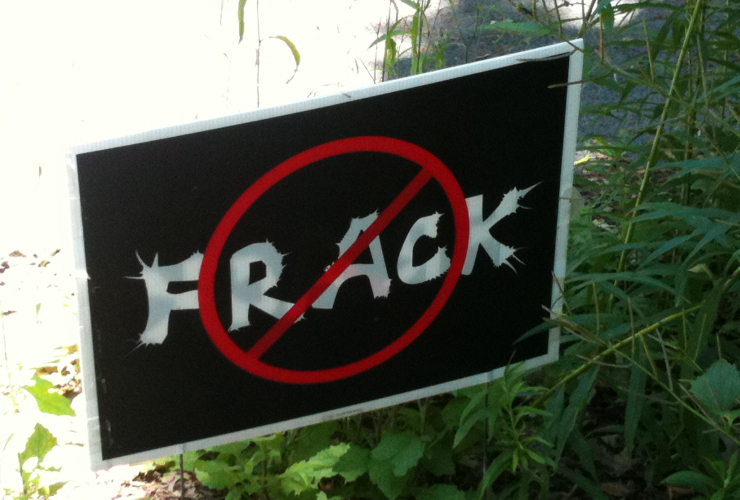With two liquefied natural gas (LNG) facilities scheduled to come online in the next two years and three more in development, British Columbia is poised to become a major gas exporter to Asia. Well drilling is also expected to greatly increase in the northeastern Peace River region of British Columbia to supply these facilities, with plans to build dozens of pipelines transport the largest volume of gas to the coast.
Today almost all the gas in British Columbia is extracted through a process called “fracking”.”
Last month we published a study in the Canadian Journal of Public Health reviewing the results of more than 50 studies on the health of people who live near this industrial activity. The results are worrying.
Fracking was widely adopted in the mid-2000s. the technique involves drill vertically for several kilometers under freshwater and saline aquifers and then horizontally for several more kilometers. Because the gas is trapped in shale or “tight” rock formations, millions of liters of water mixed with chemicals and other substances are forced into the well with enough pressure to produce microruptures (hence the name “fracking”) in the well. rock to release the gas.
These chemicals from fracking can escape into the environment from spills, evaporation or drain of wastewater. Exhaust fumes from diesel engines and gas burning are other sources of chemical exposure.
Half of the studies included in our review focused on pregnant people and their newborns. Of those, the vast majority reported harmful effects from living near these sites, including poor fetal growth, premature birth, and congenital malformations. Other studies found that living near fracking sites can lead to a higher risk of asthma attacks, heart disease, childhood cancers and overall mortality.
Several studies reviewed showed a pattern called “dose-response” in which increasing exposure levels were associated with increased risks of premature birth, birth defects, and childhood leukemia.
The studies were also conducted in multiple US jurisdictions, one in British Columbia and one in Alberta, suggesting that findings of harmful outcomes were not limited to a single location, a characteristic known as “consistency” in the study. scientific literature.
There was also evidence of “biological plausibility,” meaning that the observed relationship between fracking exposures and harmful health outcomes makes biological sense. At least 14 chemicals used in fracking fluid (for example, benzene) are known carcinogens.
At least 14 chemicals used in #fracking fluid, such as benzene, are carcinogenic. The relationship between fracking exposure and harmful health outcomes makes biological sense, write Margaret McGregor, Ulrike Meyer, Amira Aker and Élyse Caron-Beaudoin. #LNG
TO systematic evaluation showed that of the chemicals for which toxicological data were available, 43 percent and 40 percent were potentially reproductive and developmental toxicants, respectively. Other chemicals and substances used in fracking fluid can induce inflammation I alter hormonal activity in human cells, suggesting a series of ways to explain the results found by the researchers.
In biomonitoring research, Canadian researchers have reported higher levels of toxicants involved in fracking in the urine, hair, water and air from the home tap of pregnant people in northeastern British Columbia living near fracking compared to the general Canadian population. Some of these toxicants were also significantly higher in Indigenous participants compared to non-Indigenous participants.
When fracking for gas became widespread in the mid-2000s, there were no studies on human health impacts. By 2014, when the BC government commissioned its first and only report on human health and fracking, three-quarters of the studies in our review had not even come to light. Re-examination of this new knowledge and evidence by the British Columbia government is clearly needed.
The fracking industry is disproportionately located in rural and remote regions of the province that are home to many First Nations communities whose health is already compromised by structural and systemic inequalities, including Life expectancy is six times less. of First Nations people compared to other residents of British Columbia, the First Nations Health Authority recently reported.
In this context, the decision to redouble the expansion of this industrial activity without pausing to review the health evidence is especially surprising and calls into question commitments to correct the health harms caused by prominent anti-Indigenous racism and colonization. in BC DRIPA legislation, the Truth and Reconciliation Commission and In sight report.
He “precautionary principle” is a term in public health decision-making that elevates preventive action when there is credible evidence of significant harm to human health, even when study quality and data remain imperfect. Applying the precautionary principle, perhaps it is time to reconsider our policy direction based on the available evidence.
Margaret McGregor is a health policy researcher and associate clinical professor in the UBC Department of Family Medicine.
Ulrike Meyer is a family doctor who works in Dawson Creek, an area hard hit by fracking.
Amira Aker is a postdoctoral fellow in environmental epidemiology at the Center de recherche du CHU de Québec and Université Laval.
Élyse Caron-Beaudoin is an assistant professor of environmental health in the Department of Health and Society at the University of Toronto.

